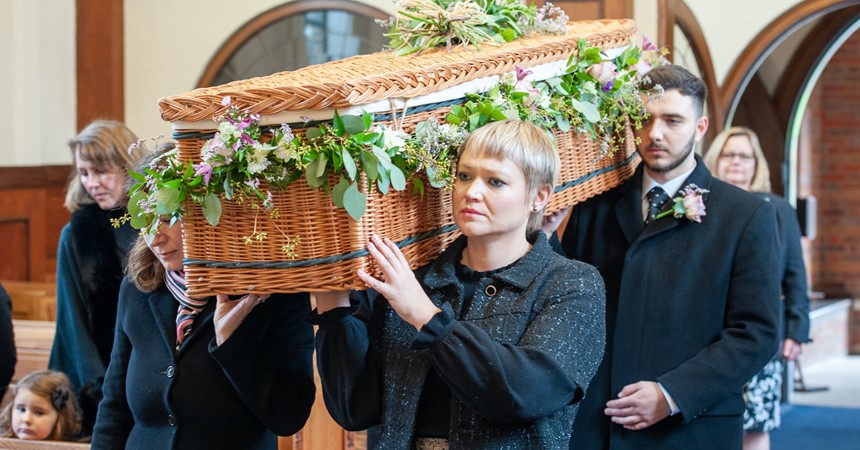Until relatively recently in the Catholic Church, the details of the liturgy were determined by the priest and those most closely involved. People spoke of ‘hearing Mass’ while the presider ‘said Mass’.
All that changed, broadly speaking, with the Second Vatican Council, when “full, conscious and active participation” was demanded – and rightly so. Within a generation or two (a short time in church terms), the notion that a bride and groom, or a bereaved family, would perhaps choose hymns but otherwise, simply arrive and respond to the liturgy as it unfolded, would be roundly rejected.
Fast forward again and for many reasons – including growing secularism, social diversity, distrust of institutions generally and the Catholic Church in particular ‒ funeral and wedding ceremonies led by civil celebrants have become the norm. Recently our parish priest told the congregation that the wedding where he had recently presided was his first in three years! Of course COVID had something to do with this, but I believe it was far from the most significant factor.
Not only have civil ceremonies become commonplace, it’s also not unusual to ‘participate’ via Zoom. To my mind this has served to highlight the inadequacies of ceremonies lacking anything but the most rudimentary framework. While church liturgy is not for everyone, it does offer structure that non-liturgical rituals would do well to emulate.
Think of a common movie scenario: a seriously ill patient lies unconscious in a hospital bed, hooked up to myriad machines. Screens chart progress – or lack thereof. Suddenly one of the machines begins buzzing. Nursing staff rush to the patient’s side as the camera zooms in to show the line on the monitor flatlining. Anyone who sees this knows the outcome will not be good.
Sadly, the metaphor sometimes applies to rituals – and liturgies.
‘Rise and fall’ are important in liturgy and ritual. Even a participant who is completely unfamiliar with what unfolds should be able to discern, easily, the elements that are more – and less – important.
For example, instrumental music and hymns (or sometimes songs) can punctuate proceedings. Hymns for which we stand mark important moments. Others – for example, post-Communion – indicate times for reflection. If every movement is punctuated by a hymn, there is no sense that some elements are more significant than others.
At a Sunday Mass, the congregation sits for the first and second readings, then stands when the acclamation heralds the gospel and remains standing for its proclamation. The least liturgically literate person could discern that the gospel is the most important reading.
A civil funeral service, for example, relies almost entirely on words, and perhaps music, to carry and console the mourners. Often the words include poetry, literature, works by eg Kahlil Gibran, John O’Donohue, Rumi, WH Auden, Seamus Heaney and so on.
Remember the Auden poem, “Funeral Blues”, read by the deceased’s lover in Four Weddings and a Funeral? It captured beautifully the mood of the moment and demonstrated how effective the right reading can be.
Increasingly, the words seem to consist mainly, if not exclusively, of eulogies. Catholic liturgy prefers the term ‘Words of Remembrance’, removing the expectation of unadulterated praise. In a Catholic Funeral Liturgy the scripture, prayers and ritual are the main event, providing the Christian context and meaning for Words of Remembrance.
Formal eulogies and less formal sharing of memories are important in our grieving. Ideally, they are woven through the many events that mark the death of a person: family meals, gatherings of friends and colleagues, and the ‘wake’ after the funeral.
Songs and instrumental music can be effective too – whether or not they are religious. Including the deceased’s ‘favourites’ may bring a smile – or a tear – and can be appropriate, but they will struggle to lift the mourners to a different level, as well chosen but perhaps unfamiliar pieces have the power to do. Another consequence of using popular contemporary music is that it can suddenly invade the aisle at Coles and Woolworths – and that may be difficult.
While a Catholic funeral has embedded the important rise and fall pattern of effective human ceremony, there are ways of embodying it in civil ceremonies.
Candles are used liturgically but they do not belong exclusively to liturgy. Sometimes a scented candle may be appropriate and redolent of the life of the deceased.
Flowers or other plants – natives, succulents, cacti – can evoke the deceased and/or contribute to creating an appropriate ambience, perhaps softening the clinical nature of some funeral homes.
There may be symbols which contribute to honouring the deceased – but they need to be clearly visible and unambiguous.
In the case of a wedding, religious or secular, the declaration of vows and the exchange of rings are the key rituals, and they contribute significantly to the ‘rise and fall’ that effective ritual requires. In a sense, a wedding ceremony affects what it intends, whereas a funeral has to ‘work harder’ to comfort the bereaved and honour the deceased in ways that are authentic and outlive the ritual itself.
Those planning rituals other than Mass – in parishes, schools, church agencies, Catholic universities – would do well to consider how to ensure ‘rise and fall’. Participants need, at different times, elements that engage them visually, aurally, emotionally and physically – as does, eg, the ritual of receiving Communion at Mass. If participants experience simply one ‘item’ after another, with no discernible rhythm, they are not experiencing liturgy. The gathering of people needs to become a congregation – speaking, listening, singing, reflecting together and thereby supporting each other.
I am certainly not advocating that all ceremonies and rituals have a religious dimension.
I am advocating that ceremonies that mark important life events merit careful consideration and preparation. ‘Flatlining’ is unlikely to be helpful or memorable. Each of us deserves better.

